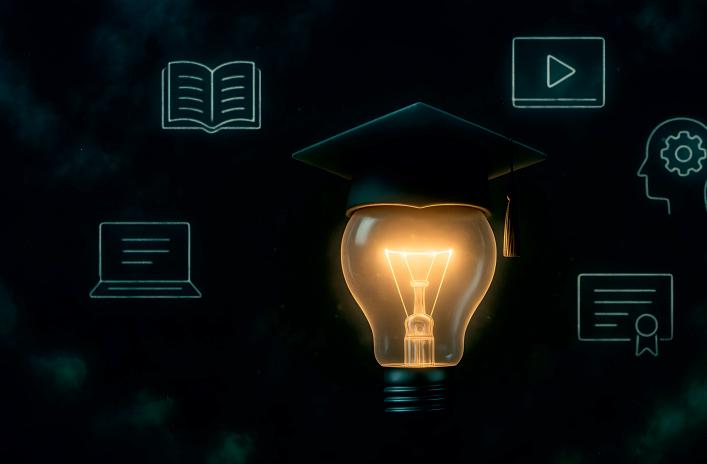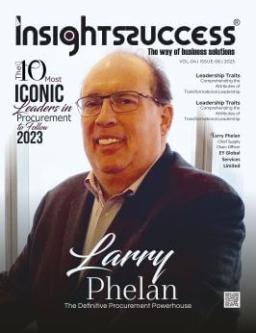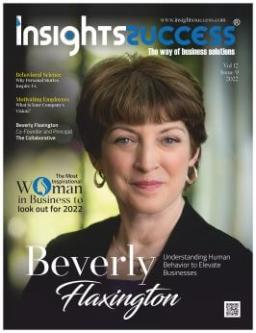The Face of American Educational Innovations









The Face of American Educational Innovations









InthisInsightsSuccessspecialedition, From Queues to Classrooms – The
Richard Larson Chronicle,weexploretheextraordinaryjourneyofoneofthe mostinfluentialmindsintheintersectionoftechnology,education,andoperations research.
Knowngloballyas"Dr.Queue"forhisgroundbreakingworkinqueuingtheory, ProfessorRichardLarsonhasspentdecadestransformingcomplexsystemsinto practicalsolutionsthatimpactmillions—fromhospitalemergencyroomstodigital learningplatforms.Butbeyondthealgorithmsanddatamodelsliesadeeperstory:that ofapassionateeducator,visionaryinnovator,andtirelessadvocateforaccessible learning.
ThiseditiontracesLarson’spathfromhisearlyresearchatMITtothefoundingof LearningInternationalNetworksCoalition(LINC),apioneeringefforttobridge educationalgapsworldwideusingtechnology.Throughthoughtfulinterviews,expert tributes,andinsightfulretrospectives,wecelebratethemanwhoseworkcontinuesto ripplethroughacademia,publicpolicy,anddigitalclassroomsacrosstheglobe.
Larson'sstoryismorethananacademicchronicleit'satestamenttothepowerof interdisciplinarythinkingandareminderofhowintellectualcuriosity,whenpairedwith purpose,canreshapetheworld.
Asyouturnthepagesofthisedition,mayyoufindinspirationnotonlyinProfessor Larson’sachievementsbutinhisunwaveringbeliefthatknowledge,whenshared equitably,becomesthecornerstoneofprogress.
Happy Reading!
Larson
The Face of American Educational Innovations


A R T I C L E S
Pioneering Models: The Art of Transforming Education for Lifelong Learning
The Power of Educational Innovation in Modern Classrooms: Progressive Change
Editor-in-Chief
Merry D'Souza
Managing Editor Executive Editor
Preston Bannister
Visualizer
David King
Senior Sales Managers
Jenny Fernandes
Art & Design Director
Rosy Scott
Bruno Alves, Jack McDowell
Marketing Manager Technical Head
James M.
Jacob Smile
Technical Specialist
Irvin Wilson
SME-SMO Executive
Steve Rodrigues
Robert Brown
Assistant Editor
Michael Wayne

Circulation Manager June, 2025
Database Management
Stella Andrew
Associate Designer
Angela Ruskin
Business Development Manager
Ryan Brown
Sales Executive
Max Floyd
Business Development Executives
Simon, Tom
Digital Marketing Manager
Dominique T.
Research Analyst
Frank Adams
Technology Consultant
David Stokes

sales@insightssuccess.com

We are also available on :




Copyright © 2025 Insights Success , All rights reserved. The content and images used in this magazine should not be reproduced or transmitted in any form or by any means, electronic, mechanical, photocopying, recording or otherwise, without prior permission from Insights Success. Reprint rights remain solely with Insights Success. Follow us on : www.facebook.com/insightssuccess/ www.x.com/insightssuccess






Education,atitscore,ismorethanamethodtotransfer knowledge. It is the bedrock of transformation, the seed from which societies blossom, and the key to unlocking the true potential of individuals Amidst the corridors of this vast system, very few have dared to reimagine it, and even fewer have succeeded in revolutionizing it. Among those rare trailblazers stands Dr. Richard Larson, an individual who didn’t merely work withinthesystem—heredefinedit.
Richard Larson’s contribution transcends the classroom. He wasavisionarywhousedhisgeniusinoperationsresearchto solve real-world problems, from pandemics to smart cities. Overthecourseof55yearsatMIT,heinspired,mentored,and reshaped the way education is imparted. His work was not confined to academia but touched the lives of students, researchers,governments,andinstitutionsacrosstheglobe.
This article takes you through the transformative journey of Professor Richard Larson—from his early beginnings to his unmatched achievements, his vision as a mentor, and the legacy he leaves behind as a pioneer in education and operationsresearch.
Born in 1943 in Bayside, Queens, New York City, Richard Larson spent his formative years in Pennsylvania before relocatingtoNorthPlainfield,NewJersey Fromanearlyage, his intellectual curiosity was evident. After completing his high school education at Needham High School in Massachusetts, he embarked on a remarkable academic journeyattheMassachusettsInstituteofTechnology(MIT).
AtMIT,LarsonearnedhisBachelor's,Master's,andPh.D.in Electrical Engineering However, his interests gradually began to stretch far beyond a single domain. His studies became a gateway into interdisciplinary exploration, ultimately setting the stage for a lifelong career that would blur the boundaries between engineering, education, and research.
Duringhisschoolyears,Larsondevelopedakeeninterestin physicsduetoitslogicaleleganceandstructuredlearning.He found chemistry unappealing, while biology posed a challenge due to its rote memorization. This inclination led himtoviewhimselfasalibertarianlearner,neverconfinedby academic silos. He realized early on that traditional labels such as "physicist" or "engineer" could limit intellectual freedom.





Instead, he envisioned a career that allowed him to traverse disciplinaryborders.Thisdynamicvisioncametodefinehis academic path, making him a bridge between conventional departments Larson's passion lay in solving problems through the lenses of multiple disciplines, a trait that would makehisworkbothimpactfulandenduring.
Professor RichardLarson'sacademichomewasMIT,where he spent over five decades. His roles were as diverse as his ideas.Hetaughtacrossfiveacademicdepartments,beginning inElectricalEngineeringandculminatingininterdisciplinary groups like the Institute for Data, Systems, and Society (IDSS).
His journey into MIT began with an unforgettable memory. As a high school student in Needham, Massachusetts, he received his acceptance letter in the schoolyard. Initially convinced that it was an error, Larson experienced what he later described as the "Groucho Marx Syndrome" the disbeliefthataprestigiousinstitutionwouldchoosehim.Yet, MIT had found a gem in Larson, and the academic world wouldsoonrecognizeit.
Dr Larsonpassionatelybelievedthateducationisthegreatest investmentasocietycanmake.Tohim,itwasnotjustameans toemploymentorfinancialsuccessbutapersonalandsocietal assetthatnoonecouldevertakeaway.
Helikenededucationtoaladdertonewworlds—notastatic structurebutanevolving,life-longjourney.Withthisbelief, he dedicated himself to ensuring that students did not just learn facts but became empowered individuals capable of transformingtheirsurroundings.
OneofthemostmemorableepisodesfromProfessorLarson's teaching career involved a student who came to him feeling defeatedandreadytodropoutduetoapoorgrade.Insteadof lettingthestudentgiveup,Larsonengagedhiminmeaningful dialogue, rediscovering the student’s commitment and reignitinghisenthusiasm.
Theseone-on-onementorshipswerenotrare.Overtheyears, Larson became known for his ability to inspire students, turningmanyintotopachievers.Hisimpactwasoftensubtle butlong-lasting,withnumerousformerstudents


acknowledging his role in their personal and professional growth.
Richard Larson's career was adorned with leadership roles and landmark achievements. He served as president of the OperationsResearchSocietyofAmerica(ORSA)from19931994andlaterasthepastpresidentofINFORMS(Institutefor OperationsResearchandtheManagementSciences)in2005.


Hewastheco-directorofMIT'sOperationsResearchCenter for over 15 years and led the MIT BLOSSOMS (Blended Learning Open Source Science or Math Studies) Initiative. This educational project focused on creating high-quality video lessons to improve STEM education worldwide, especiallyinunderservedcommunities.
Larson’sscholarlyoutputincludesover175scientificpapers andsixbooks.Histopicsrangedwidely,fromurbanpolicing systems to pandemic response mechanisms During the COVID-19 pandemic, his research provided crucial insights into vaccine distribution logistics and healthcare system optimization.
Hisworkalsodelveddeepintobroadereducationalreforms, examining how operations research could be applied to restructureandimprovepubliceducationintheUnitedStates. These contributions helped position operations research not justasascientificfieldbutasatoolforsocialinnovation.
Throughout his career, Dr. Larson’s teaching philosophy remainsgroundedinasimplebutpowerfulgoal:engagethe student Whether teaching airline scheduling models or queuingsystems,heensuresthateverylessonconnectswith real-worldrelevance.
He refers to operations research as the "most important invisible profession in the world," highlighting how its principles silently drive much of modern society’s logistics, technology, and infrastructure. By demystifying the subject, hemakesitaccessible,engaging,andtransformative.
ForProfessorLarson,atruevisionaryleaderissomeonewho educatesstudentstothinkindependently,actresponsibly,and liveasenlightenedcitizens.Hecherishesinquisitivenessover rote learning, encouraging students to ask hard questions, challengeassumptions,andinnovate.
He admires leaders who dare to carve out their own paths—often taking risks to challenge outdated systems and ideologies.ForLarson,shapingthemindsofyoungthinkers isthemostimportantleadershiptaskofall.
Professor Larson hopes to be remembered not just as a researcherorteacher,butassomeonewhoaddsgenuinevalue totheworldofeducationandoperationsresearch.Hestrives topushtheboundariesofhisdisciplineandtakesdeeppridein the many graduate students who go on to impactful careers acrossacademia,industry,andgovernment.
Hismentorshipismorethanacademicguidance;itservesasa lifelong influence that shapes individuals to become changemakersintheirownright.
Richard Larson's groundbreaking contributions were recognized with numerous awards. His first book, Urban Police Patrol Analysis (MIT Press, 1972), earned the prestigiousLanchesterPrize.HereceivedseveralBestPaper of the Year awards, including for "Modeling the Effects of H1N1InfluenzaVaccineDistributionintheU.S."(withAnna Teytelman)and"STEMcrisisorSTEMsurplus?Yesandyes" (withYiXue).
In2015,hereceivedtheLawrenceM.KleinAwardfromthe U.S. Department of Labor, and his work was featured in the New York Times, affirming his place as one of the most respectedmindsinmodernacademia.
As Professor Richard Larson reflects on his life and legacy, his story emerges as a powerful testimony to the impact of vision, dedication, and empathy. He did not merely teach students;heequippedthemwithtoolstochangetheworld.
Through his research, mentorship, and leadership, he has transformednotonlyhowweunderstandoperationsresearch but also how we view the purpose of education. Larson redefined what it means to be a professor, a mentor, a researcher,andmostimportantly,achangemaker.
In an era that often glorifies speed and shortcuts, his life reminds us that true change is built patiently, layer by layer, acrossdecadesofmeaningfulengagement.RichardLarsonis notjustanarchitectofoperationsresearch—heistheunseen architectofcountlessfuturesreshapedthrougheducation.

Education today must extend beyond the traditional boundaries of the class environment. The technique of reframing education is to organize it in a manner that promotes lifelong learning, a mode of practice which prioritizes constant improvement, adaptability, and independentlearning.Asworkshiftsandtheworldcontinues to grow in complexity, individuals are being challenged to keeplearningandadaptingtonewskillsoveralifetime.Itisa factthatrequireseducationsystemsnotjustamatterofgetting information across but also skepticism of minds, solving problems, and grit It does not mean recruiting new technology or re-writing textbooks so that education can be transformative. Education is a cultural transformation in whichlearningisviewedasacontinuousprocessthroughout the entire human being's life. It requires collective effort by institutions, governments, employers, teachers, and learners indevelopinginclusiveandadaptableeducationsystemsthat fosterpersonalandprofessionaldevelopmentatallstagesof life.


The most important element in restructuring education for lifelong learning is the re-fashioning of curricula to make them relevant, responsive, and modular Fixed-content curriculumthatisconventionalinorientationgoesoutofdate quitequicklyinaperiodofrevolutionarychange.Toprepare the learners for day after tomorrow, future-proofing the educational content and inter-weaving it with crossdisciplinary competencies, digital literacy, and emotional intelligencewillbeindemand.Competency-basededucation isamoreproductivemodelthatenableslearnerstocomplete courses at their own pace and demonstrate competence in real-to-life, real-world applications Adaptive learning pathways like micro-credentials, certificates, and stackable degreesaremoreresponsiveandmakeiteasierforstudentsto accreteskillsincrementallythroughouttheirlifetimes.
They are particularly valuable for working professionals, parents,andre-entryworkers.Byofferingvariousoptionsand formats, the learning process is made accessible and responsive to serve the multiple needs of the learners. In addition, these models ensure convergence of the learning experience with labor market needs, hence enabling the individualtoacquirethedesiredskillssothattheycanremain competitiveandemployable.Apartfromcurricularflexibility, thereisalsoagreaterdemandforcontentthatfostersethical reasoning,globalawareness,andcivicresponsibility
Technologyisatthecoreinenablinglifelonglearningusing tools that open doors, transform learning, and enable collaboration.Artificialintelligence,mobileapplications,and learning management systems have transformed where, when,andhowonelearns.Studentscanlearnwheneverthey want,receivereal-timefeedback,andlearnfrompossibilities anywhere in the world. Adaptive technologies also convert content and speed based on learners' learning style, engage learnerswithlearning,andrenderlearningproductive.
Technologyalsoenablesthenewpedagogiessuchasprojectbased learning, gamification, and flipped classrooms. Webbased learning platforms also enable peer-to-peer learning andmentoringandextendthelearningcommunitybeyondthe classroom But as schools begin to introduce digital technology, issues of digital access and literacy must be addressed.Providingallstudentswiththehelpandresources they need is crucial not to allow existing educational disparities to grow To fulfill the promise of technology, teachersthemselvesmustbetrainedindigitalpedagogiesand
encouraged to use new technology. Staff training must be institutionally funded so teachers can facilitate learners in digitalsettings.
Lifelong learning rests on a questioning, reflective, and continuousimprovementculture.Theeducationsystemmust prioritizebuildinganenthusiasmforlearningandownership in childhood. It is about getting kids to ask, question assumption, and take ownership of learning. Shifting to a student-centered education system reaffirms the teacher as facilitator and mentor in guiding students on their own journey Non-schoollearningculturerestsingreatmeasureon employer,government,andcommunitysponsorship.
Organizations must cultivate the culture through investment in professional development activity, innovation, and informal learning crediting Public institutions such as libraries,communitycenters,andwebsiteshaveasignificant function to play in making learning available to all. If the societal culture recognizes and supports lifelong learning, then the people will be empowered to prosper, develop, and thriveinthecontemporaryworld.Inordertoensurethatthere exists a culture of lifelong learning, social recognition of achievementinlearningacrossthewholespanoflifeisalso essential.
Conclusion
Itisadifficultbutindispensabletasktoremakeschoolingso that it supports lifelong learning. This calls for refashioning the curriculum to emphasize productive and portable learning,thoughtfuluseoftechnologytoimproveaccessand individualization,andaspiritofcontinuousimprovement.As society and technology develop at ever-accelerating velocities, lifetime learning is ever more essential and more global. If education is considered as a process, rather than a phaseofone'slife,thenitisapowerfuldriverofpersonaland community growth. It allows people to make intelligent decisions,learnhowtoliveindifferentsituations,andprofit theircommunities.


Theworldofeducationisundergoingatransformativeshift.Inthefaceof rapid technological advancement, changing societal needs, and a global economy that demands adaptability, the way we teach and learn is evolving. At the heart of this transformation lies educational innovation—a powerful force redefining modern classrooms and the very purpose of schooling itself.
Gonearethedayswhenachalkboard,astackoftextbooks,andarigidcurriculum wereenoughtopreparestudentsforthefuture.Today’sclassroomsarebecoming dynamic ecosystems of learning, fueled by creativity, collaboration, and the intelligentuseoftechnology Educationalinnovationisnolongerjustanidea;itisa necessitythatisshapingthefutureoflearningforgenerationstocome.
Traditionalteachingmethods,whilefoundational,oftenfailtokeeppacewiththe diverselearningneedsoftoday’sstudents.Educationalinnovationseekstobreak away from the one-size-fits-all approach, introducing flexibility, relevance, and studentengagementintothelearningprocess.
Classroomsarebecomingmoreinteractiveandlearncentered.Studentsarenotjust passive recipients of information; they are active participants in their own education.Fromexploringhistoricaleventsthroughvirtualrealitytocollaborating on science projects with peers from other countries via video conferencing, the learningexperienceisnowimmersiveandglobal.
Moreover,innovationisn’tconfinedtoflashygadgetsoronlineplatforms.It’salso aboutmindset.Teachersarereimaginingtheirroles—notjustasinstructorsbutas facilitators, mentors, and guides. They create environments where curiosity is nurtured, mistakes are welcomed as part of the learning journey, and critical thinkingisencouragedfromanearlyage.


Oneofthegreateststrengthsofeducationalinnovationliesin its ability to make learning meaningful and relevant. By connecting classroom content to real-world issues, students developastrongersenseofpurposeandmotivation.Whether it’s solving local community problems through servicelearningprojectsorusingcodingskillstodesignusefulapps, students are given the chance to apply what they learn in impactfulways.
Inthisevolvinglandscape,subjectboundariesareblurring.A singleprojectmayintegratescience,math,socialstudies,and art fostering interdisciplinary thinking that mirrors the complexities of real life. Students are encouraged to ask questions, explore different viewpoints, and seek solutions—developing the analytical and emotional skills neededfortoday’sworld.
While technology often captures attention in discussions about educational innovation, the true drivers of change are educators. Teachers who embrace innovation bring new energy into the classroom. They experiment with different teaching models, adapt lessons to meet the diverse needs of theirstudents,andcontinuouslylearnthemselves.
Training and professional development are critical in this regard. Schools that invest in their teachers by offering opportunitiestoexplorenewtools,exchangeideaswithpeers, and stay updated on educational trends create a thriving cultureofinnovation.Butbeyondtraining,whattrulymatters isateacher’swillingnesstoremainopen-mindedandstudentfocused.
In innovative classrooms, you’ll find educators building strong relationships with their students, understanding their learning styles, and providing personalized support. The humanconnectionremainscentral,evenastechnologyplays agrowingrole.
Despite the tremendous potential of educational innovation, challengesremain.Accesstoresourcesisstillunequal.Many schools—especially in underserved regions—struggle with limited funding, outdated infrastructure, and insufficient teacher training. This digital divide can widen existing educationalinequitiesifnotaddressedthoughtfully
Moreover, change often encounters resistance. Some educators and institutions are hesitant to move away from traditional methods, fearing uncertainty or loss of control. Othersareconstrainedbyrigidtestingsystemsandoutdated policiesthatleavelittleroomforexperimentation.
For innovation to flourish, it must be supported at every level from policymakers and school administrators to parents and communities. It also requires continuous evaluation to ensure that new methods genuinely enhance learningoutcomesanddon’tsimplyfollowtrendsforthesake ofappearance.
Amidtheexcitementofnewtoolsandstrategies,it’svitalnot to lose sight of what education is ultimately about: human growth.The goal of educational innovation should not be to replaceteacherswithmachinesorstudentswithscreensbutto enhance the learning experience in ways that honor individuality,culture,andemotionalwell-being.
Students thrive when they feel seen, heard, and supported. Whether through personalized learning apps that adapt to a child’s pace or classroom discussions that value diverse perspectives,innovationworksbestwhenitsupportshuman connectionanddevelopment.
As education continues to evolve, it’s essential that innovation remains inclusive, empathetic, and purposeful. It should empower both teachers and learners, not overwhelm them.
The future of education lies in collaboration Teachers, parents,students,policymakers,andtechnologistsmustwork togethertocreatelearningsystemsthatareflexible,resilient, and relevant. Educational innovation isn’t a one-time solution; it’s an ongoing process that requires curiosity, courage,andcommitment.
Modern classrooms are no longer limited by walls or geography Theyarebecomingspacesofpossibility—where imaginationmeetsapplication,wherefailurebecomespartof growth, and where every learner is equipped to shape the future.
Byembracingthepowerofeducationalinnovation,wedon’t just prepare students for exams—we prepare them for life. Andindoingso,wehelpshapeamoreinformed,creative,and compassionateworld.







www.insightssuccessmagazine.com














